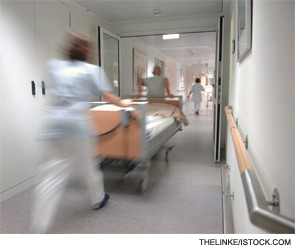BOSTON—Pediatric ambulatory surgery centers are fast-paced, high-volume places with many of the ingredients that can contribute to safety concerns, a patient safety expert from Children’s National Medical Center (CNMC) said at the 2010 Annual Meeting of the American Academy of Otolaryngology-Head and Neck Surgery (AAO-HNS), held here Sept. 26-29.
Explore This Issue
October 2010Those concerns make it especially important for physicians to be aware of safety pitfalls and establish guidelines that fit each center, said Rahul Shah, MD, a pediatric otolaryngologist at the CNMC and co-chair of the Patient Safety and Quality Improvement Committee of the AAO-HNS.

Dr. Shah was part of a panel on safety in pediatric ambulatory surgery centers that asked, “Is the bar too low?” The panel generally agreed that the bar is probably set correctly, because safety statistics show otolaryngology procedures at ambulatory centers are generally safe.
Ambulatory procedures in the U.S. have been on the rise: A 300 percent jump in procedures from 1996 to 2006 was almost entirely the result of increased volume in ambulatory centers, according to data presented by Ellis Arjmand, MD, PhD, medical director of the Ear and Hearing Center at Cincinnati Children’s Hospital Medical Center.
In pediatrics, otolaryngology traditionally accounts for a large number of pediatric ambulatory procedures, due largely to the high number of ear procedures, tonsillectomies and adenoidectomies performed on children. A 2006 national survey found that pediatric adenotonsillectomy was the second most common ambulatory procedure, behind myringotomy (Laryngoscope 2010;120:821-825).
Persistent Problems
A study on national safety data recorded for all types of procedures at all facilities (Ear Nose Throat J. 1996;75:710-714) gives some guidance for pediatric ambulatory centers, Dr. Shah said. It’s clear that several factors that have been found to contribute to safety problems are inherent at pediatric ambulatory centers, he said, even if they have been handled well according to safety statistics.
One of those factors is haste, he said. “We all know, perhaps by definition, that there is some haste in a surgery center,” he said.
In addition, because ambulatory centers tend to be smaller, problems may arise in situations requiring more resources than are available, he said.
“What happens if your cautery goes out? What happens if your anesthesia machine goes out?” Dr. Shah said. “Many facilities, including our own, have two anesthesia machines running [in] two rooms, so if you lose an anesthesia machine, that could be a problem.”
Leave a Reply